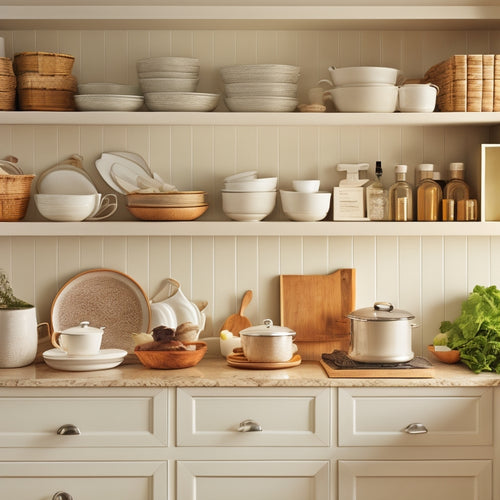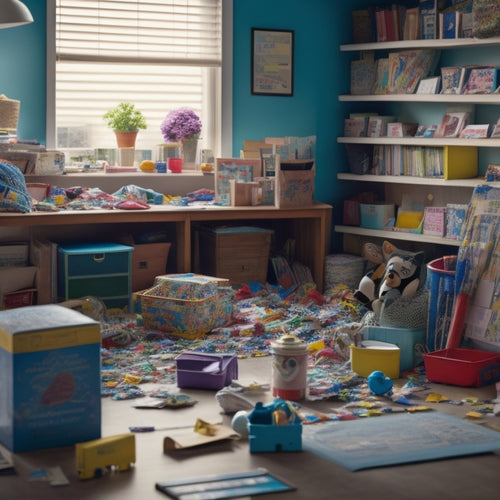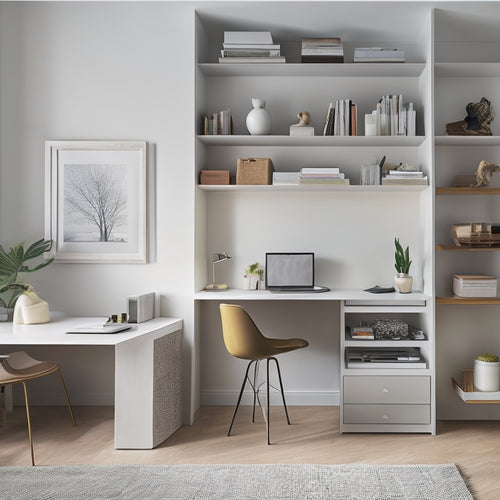
Master Label Printing: Tips and Tricks
Share
Mastering label printing requires a meticulous approach, from selecting the right label paper to guaranteeing quality control measures. Precision is key in choosing label paper, considering factors like printer compatibility and size. Inspect label sheets for quality before printing to avoid issues. Well-designed templates and testing on plain paper ensure accurate label information positioning. Proper loading and setup of label paper in the printer tray is essential, and monitoring print jobs with quality control measures prevents defects. By following these precise steps, you'll be well on your way to producing professional-looking labels, and uncovering even more nuances to take your label printing to the next level.
Key Takeaways
• Choose the right label paper by considering size, printer type, and technology for precise and high-quality labels.
• Inspect label paper quality before printing to ensure smooth printer function and prevent issues.
• Design and test labels using professional templates and plain paper to ensure accurate information positioning and avoid wastage.
• Load and set up label paper correctly by fanning out sheets, loading limited quantities, and using regular paper to prevent bending.
• Monitor and control label printing quality by canceling printing jobs, performing regular checks, and troubleshooting issues promptly.
Choosing the Right Label Paper
Precision is crucial when selecting label paper, as it sets the foundation for a successful label printing experience. With various sizes available, including mailing labels, folder labels, and shipping labels, choosing the right size for your needs is vital.
Buying pre-cut labels can be an efficient option for printing, as it saves time and effort. When picking a label sheet, it's important to take into account your printer type, such as HP LaserJet or inkjet, to guarantee compatibility and best results. Matching your label paper to your printer technology ensures the best possible outcome.
Inspecting Label Paper Quality
Once the right label paper is selected, it is equally important to inspect the quality of the label sheets before printing to prevent any potential issues.
A thorough label paper inspection guarantees that your printer will function smoothly and produce high-quality labels.
Here are some essential checks to perform:
-
Check for curled edges, missing labels, or sticky residue that can cause printer jams or smears.
-
Verify that the label sheets are compatible with your printer technology to secure best results.
-
Inspect for any signs of damage or wear that can affect print quality.
- Discard any label sheets with imperfections to avoid printer damage or wasted ink.
Designing and Testing Labels
When creating labels, a well-designed template is essential, as it guarantees that the label information is accurately positioned and formatted to match the label paper's specifications.
A well-crafted label design ensures that your labels look professional and are easy to read. To design your label, use Word templates, which can be accessed through the Mailings tab. Select the correct template based on your label brand and type, and find additional templates from label paper manufacturers if needed.
Before printing on label paper, test your design and settings on plain paper to confirm proper alignment. Perform alignment testing by comparing your test sheet to the label paper behind a light source, and adjust your settings and design as needed. This step is important to avoid wastage and ensure precise label printing.
Loading and Setting Up Label Paper
Generally, loading label paper accurately is a critical step in the label printing process, as it directly impacts the quality and accuracy of the final product.
To guarantee a smooth label loading process, follow these essential steps:
-
Fan out label sheets before loading to prevent sticking
-
Load no more than 25 label sheets at a time
-
Place regular paper below label sheets in the tray to prevent bending
- Avoid overloading the paper tray to prevent jams
Proper paper tray setup is vital for successful label printing. By following these simple steps, you can avoid common errors and ensure your labels print correctly.
Remember to test your label design and settings on plain paper before using label paper to prevent any issues.
Printing and Quality Control
With the label paper correctly loaded and set up, attention turns to the printing process, where careful monitoring and quality control measures are necessary to guarantee accurate and high-quality label production.
During printing, keep a watchful eye out for errors, and cancel the job if issues arise. Make necessary adjustments within your Word program to guarantee accurate printing. Quality assurance is key, so perform regular checks to prevent defects.
Troubleshooting techniques, such as checking ink levels and printer alignment, can help resolve common issues. By implementing these quality control measures, you'll be able to identify and rectify problems quickly, saving time and resources in the long run.
This attention to detail will result in professional-looking labels that meet your expectations.
Frequently Asked Questions
Can I Use Label Paper in a Photocopier or Only a Printer?
When it comes to using label paper, it's important to take into account the device's compatibility. Label paper is specifically designed for printers, and its use in a photocopier is not recommended.
Copier settings are calibrated for standard paper, and label paper may cause jamming or damage. Paper compatibility is vital to guarantee smooth operation and prevent issues.
It's best to stick with printer-specific label paper to achieve the best results.
How Do I Store Leftover Label Sheets to Prevent Damage?
Did you know that 75% of label users experience damage to their leftover label sheets due to improper storage? To guarantee this, adopt a label storage system that keeps sheets flat, undisturbed, and away from direct sunlight.
Organize label sheets by size and type, and store them in resealable bags or protective folders. This guarantees sheets remain crisp, clean, and ready for their next use.
Are Label Paper Templates Available for Mac or Only PC Users?
When it comes to label paper templates, Mac users can rejoice! Most label paper manufacturers offer templates compatible with Mac operating systems, ensuring design flexibility and seamless integration.
Many popular word processing software, such as Microsoft Word and Apple Pages, provide built-in label templates or allow for easy import of third-party templates.
Can I Use a Laser Printer to Print Labels With Color Images?
When printing labels with color images using a laser printer, consider Color Calibration to guarantee accurate color representation.
Laser printers can produce high-quality images, but may require adjustments to Image Resolution settings to prevent pixelation.
For best results, set the resolution to at least 300 dpi and adjust the printer's color settings according to the manufacturer's guidelines.
This will ensure vibrant, professional-looking labels that make a lasting impression.
Are There Eco-Friendly or Recycled Label Paper Options Available?
When it comes to label printing, going green is a viable option. Eco-friendly label paper alternatives made from sustainable materials are increasingly available.
Look for products featuring high post-consumer waste content, biodegradable, or recycled materials. These environmentally responsible choices can notably reduce the environmental impact of your labeling operations.
Related Posts
-

Why Kitchen Cabinet Organization Matters Most
You're likely losing more than just time and ingredients when you can't find what you need in your kitchen cabinets -...
-

What's the Best Home Organization System for ADHD?
You need a home organization system that acknowledges your unique brain chemistry and works with your ADHD, not again...
-

7 Essential Strategies for More Storage Space
Take back control of your space by implementing these 7 essential strategies for more storage space. Start by maximiz...


